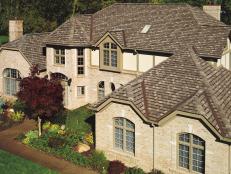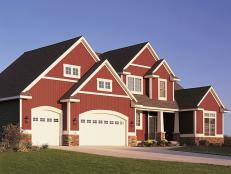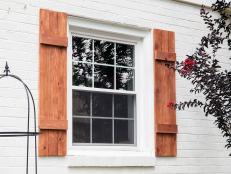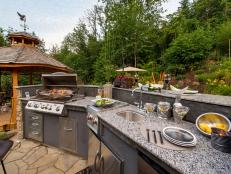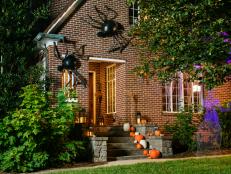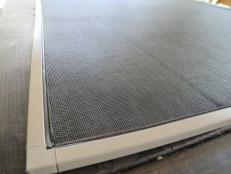Foam Sheathing on Exterior Walls
One of the most important energy-saving materials in a home is the insulation. Without insulation, many of the other energy-efficient components, like energy efficient heating and cooling equipment and windows, won't perform as intended. Building codes cite the minimal amount of insulation needed by law. In general, more insulation, or insulation with a higher R-value, will help to make the home more efficient and comfortable year round.
The best practice for increasing the R-value in exterior walls is to protect them with insulated foam sheathing.
Some builders use 1/2-inch wood sheathing (R-0.6) or asphalt impregnated sheathing, usually called blackboard (R-1.3) to sheath the walls. By using a 1/2-inch foam insulated sheathing (R-2 to R-3.5) in combination with wall cavity insulation, the total R-value of the exterior wall will be increased, contributing to greater energy efficiency. Sheathing thicker than 1/2 inch will yield even higher R-values.
Another advantage of insulated foam sheathing is that, when properly installed, it provides moisture control. It protects against condensation on the inside wall by keeping the interior of the wall warmer. Insulated foam sheathing has these additional advantages:
- The continuous layer of insulation reduces thermal bridging through wood studs, saving energy and improving comfort. Thermal bridging occurs when there is a break in the continuity of the insulation layer, which results in heat loss.
- It is easier to cut and install than heavier-weight sheathing products.
- It usually costs less than plywood or oriented strand board (OSB).
Most sheathing products come in 8-, 9- or 10-foot lengths to allow complete coverage of the wall. Ensure that the sheathing completely covers, and is sealed to, the top plate and band joist at the floor. Once it is installed, patch all holes, penetrations, and seams with caulk or housewrap tape.
Note that insulated foam sheathing does not provide structural support, so consider using it in combination with let-in bracing, which provides structural support similar to that offered by plywood or OSB. Some builders use two layers of sheathing — plywood or OSB for structural support and a seam-staggered layer of rigid foam for insulation.
When the total depth of the sheathing material exceeds 1/2 inch, make certain the window and door jambs are adjusted for the total wall thickness. Some flanged windows are readily adaptable to this approach
Increasing the insulative value of a home will help to reduce energy bills and provide year-round comfort for the homeowners. A cost-effective way to increase the R-value of exterior walls, while also providing moisture control, is to use insulated foam sheathing instead of wood sheathing.
To learn more about best practices for wall insulation, download a fact sheet from the DOE website.






